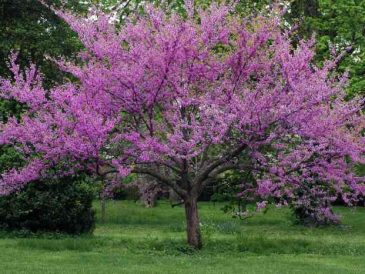Potential Challenges and Solutions: Best Tree To Plant
Best tree to plant – Planting trees, while rewarding, presents several challenges that require proactive management. Understanding these potential issues and implementing appropriate preventative and remedial measures is crucial for ensuring the long-term health and success of newly planted trees. This section will address common problems, their causes, and effective solutions.
Common Tree Diseases and Pests and their Management
Many tree diseases and pests can significantly impact tree health and survival. Fungal diseases, such as anthracnose and root rot, can cause leaf spots, wilting, and ultimately tree death. Insect pests, including aphids, borers, and scale insects, can weaken trees by feeding on leaves, stems, or roots. Prevention strategies include selecting disease-resistant tree varieties, maintaining proper tree spacing for good air circulation, and providing adequate water and nutrients.
Treatment options vary depending on the specific disease or pest and may involve pruning infected branches, applying fungicides or insecticides, or introducing beneficial insects to control pest populations. Regular monitoring of trees for signs of disease or infestation is essential for early detection and timely intervention.
Impact of Drought Conditions and Mitigation Strategies
Drought significantly stresses trees, leading to reduced growth, leaf scorch, and increased susceptibility to diseases and pests. Prolonged drought can even cause tree mortality. Mitigation strategies include selecting drought-tolerant tree species appropriate for the specific climate, mulching around the tree base to retain soil moisture, and implementing efficient irrigation systems. Deep watering during periods of drought is more effective than frequent shallow watering, as it encourages deeper root growth.
Proper pruning techniques, removing dead or diseased branches, can also reduce water stress on the tree. In severe drought conditions, supplemental watering may be necessary to ensure tree survival. For example, during the 2012 drought in the United States, many municipalities implemented water restrictions and encouraged residents to water trees deeply but less frequently.
Challenges of Urban Tree Planting and Solutions
Planting trees in urban environments presents unique challenges, including limited space, compacted soil, air pollution, and human activity. Compacted soil restricts root growth and limits water and nutrient uptake. Air pollution can damage leaves and weaken trees. Solutions include amending the soil with organic matter to improve drainage and aeration, selecting tree species tolerant of air pollution and urban conditions, and protecting trees from physical damage caused by construction or traffic.
The use of tree grates to allow for root growth and proper planting techniques, such as avoiding planting trees too deeply, are crucial for success in urban settings. The selection of smaller, more appropriate tree species for urban spaces is also essential to avoid future conflicts with infrastructure.
Problems from Improper Planting Techniques and Remedies, Best tree to plant
Improper planting techniques, such as planting too deeply, failing to properly amend the soil, or neglecting to water adequately, can significantly impact tree establishment and long-term health. Planting too deeply can lead to girdling roots, restricting water and nutrient uptake. Poor soil preparation can result in poor drainage and root development. Insufficient watering after planting can cause stress and mortality.
Remedies for these problems may involve careful excavation to correct planting depth, soil amendment to improve drainage, and supplemental watering to support root establishment. Proper tree staking and mulching can also help protect young trees and promote healthy growth.
Resources for Identifying and Solving Tree-Related Problems
Identifying and solving tree-related problems often requires specialized knowledge. The following resources can provide valuable assistance:
- Local agricultural extension offices: These offices offer expertise on local tree species, diseases, and pests, and provide advice on appropriate management strategies.
- Certified arborists: Arborists are trained tree care professionals who can diagnose tree problems, recommend treatments, and perform necessary maintenance.
- Online resources: Numerous websites and databases provide information on tree identification, diseases, pests, and management techniques. Examples include the websites of universities with forestry departments and reputable gardening organizations.
- Local nurseries and garden centers: These businesses can provide information on suitable tree species for your area and offer advice on planting and care.
Commonly Asked Questions
What are some common tree diseases and how can I prevent them?
Common diseases vary by region and tree species. Prevention includes selecting disease-resistant varieties, ensuring proper spacing for good air circulation, and maintaining tree health through appropriate watering and fertilization. Consult local arborists for specific advice.
How often should I water a newly planted tree?
Frequency depends on climate and soil conditions. Generally, water deeply and regularly, especially during dry spells, ensuring the root ball remains moist but not waterlogged. Reduce watering frequency as the tree establishes itself.
When is the best time of year to plant a tree?
The ideal planting time varies by species and climate. Generally, spring or fall are preferred, avoiding extreme heat or cold. Check local guidelines for optimal planting seasons in your area.
How do I choose a tree for a small yard?
Select smaller-growing tree varieties that mature to a size appropriate for your space. Consider columnar or weeping forms to maximize vertical growth and minimize width.
Selecting the best tree to plant depends heavily on environmental factors and personal preferences. However, for those seeking the classic evergreen aesthetic and potential for long-term landscaping impact, considering pines is a wise choice. To help narrow down your options, a comprehensive guide on best pine trees to plant can prove invaluable. Ultimately, the ideal tree for your needs will balance aesthetic appeal with practical considerations like mature size and soil requirements.



